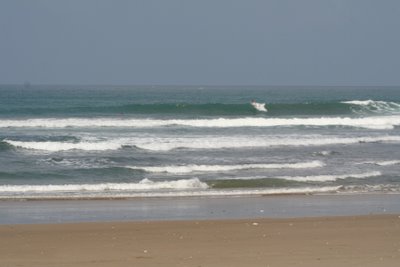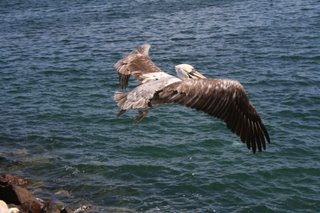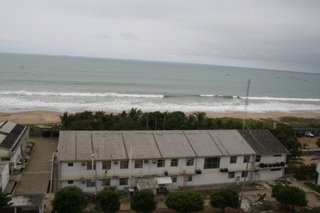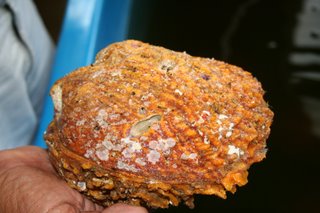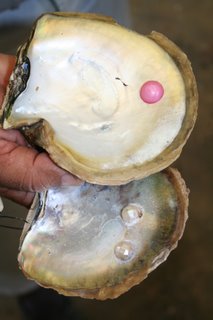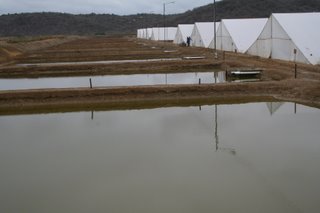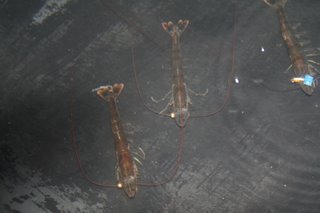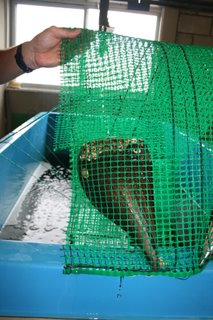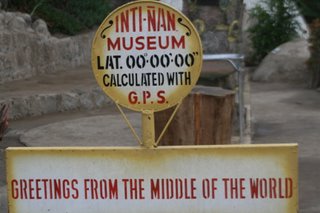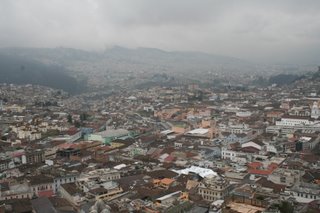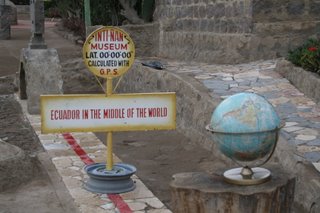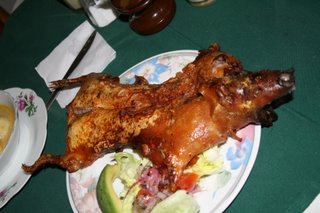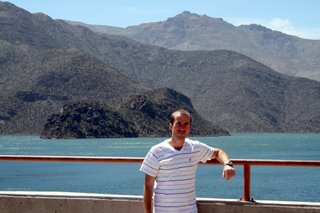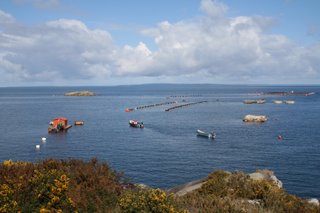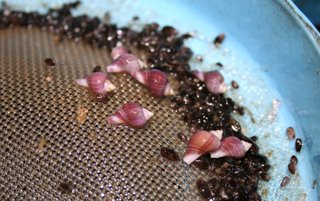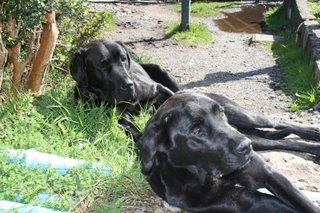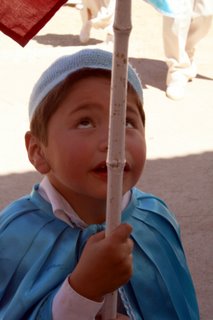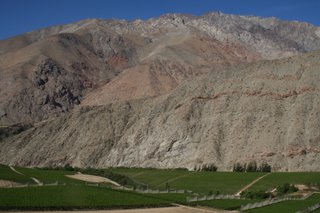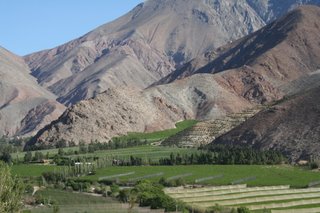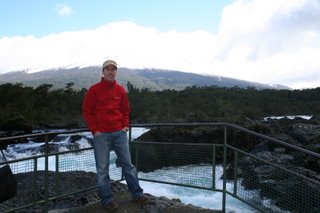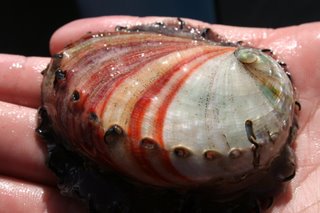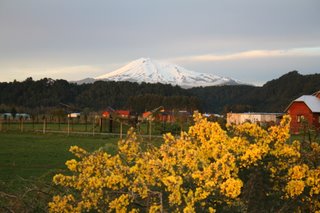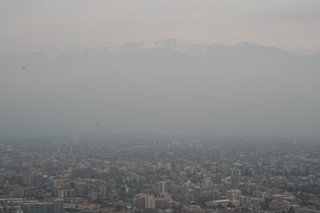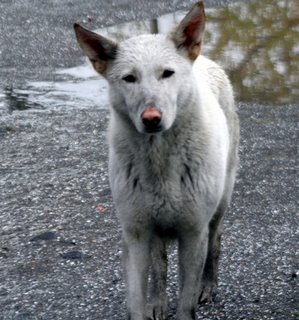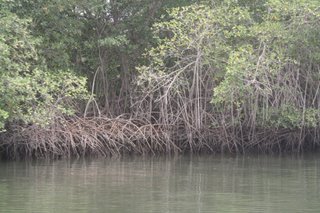 Banana Republic
Banana RepublicThere is a good chance that if you ate a banana today, it came from Ecuador. Ecuador is the worlds largest banana exporter and while there are over a hundred varieties, as appears to be standard these days, we only get our hands on the most uniform and bland of the lot...the Cavendish. The banana plays an important role in the diet here in Ecuador and not a meal goes by without seeing a variant somewhere within the dish.
Today I headed south of Guayaquil to Machala...the self-professed 'Banana Capital of the World' (though unfortunately I was not in time for the World Banana Festival where amongst other events they crown the 'World Banana Beauty Queen'.....that's some title). Driving south, the landscape gives way first to rice paddies, then mango and papaya plantations (the papaya here are the size of rugby balls) and then finally to the bananas. Plantation after plantation line the highway that heads south to the Peruvian border, the largest being 'Noboa' owned by recent presidential candidate Alvaro Noboa. The presence of Noboa (as banana and candidate) within the region is obvious with almost every wooden and plaster surface on the roadsides painted with the name of the candidate or his closest rival for the 2006 presidency, Dale Correa. Apparently it is normal here for the parties to pay local homeowners to paint their houses with party colours and for them to wear the free t-shirts that are given out.
In Machala I was greeted by Alex de Wind, an Ecuadorian from a family involved in the prawn farming industry in Ecuador since the start back in the 1960's. Alex invited me down to take a look at his farm out on Jambeli Island, half an hour out through the mangroves by boat (picture of mangrove above). After the high speed trip we arrived at a large cleared area of mangrove (mangrove clearing was outlawed in the mid 1990's and no further expansion is allowed....in fact many areas have now re-established), the site of the 'camaronera' (prawn farm) of Bravito S.A.
After hearing so much about the industry over the past couple of weeks I was very glad to finally get a look at the system in action...from larval production and rearing, through juvenile stocking to the harvesting of adult shrimp. Alex impressed me with his holistic approach to farming and was keen to demonstrate that his farm has been officially accredited 'organic' and that the prawns are produced without any of the antibiotics or pesticides that have tainted the image of the industry in some parts of the world in recent years. This was great news, especially since the on-site chefs had prepared farm-produced organic prawns for us for lunch. I could get used to this.
I won't bore you with the details of production but in these temperatures (water around 30 degrees Celcius), a prawn takes just over 100 days to reach harvest size. Throughout this process there are many obstacles that the prawn and farmer must overcome, not least disease (remember that diseases such as white spot caused big problems here and elsewhere back in the late 1990's). Alex farms 'extensively' rather than 'intensively' (i.e. extensive systems have less animals growing per metre square of pond). He told me that extensive systems tend to cope better with endemic diseases such as white spot since the prawns are less crowded (only around 8/m rather than double this in intensive farms) and hence less stressed. Makes sense.
The crew on the farm make all sorts of daily and weekly checks on water condition, feeding rate, health and most importantly, growth of the produce. I was lucky enough to watch them 'cast netting' the ponds to make growth and feeding assessments. The prawns shown below are typical of the ones Bravita produces. These are Penaeus vannamei, the Pacific white shrimp.
Finally, a note of caution about the Ecuadorian road system. Drivers here only use the horn when within half a metre of the car in front, presumably to warn the other driver that they intend to overtake on the blind corner that is approaching. It is also common for taxi drivers here (especially on longer journeys) to perform a quick prayer before setting off. My driver told me today '...it would take a while for you to learn to drive here, right?'. After I agreed he proceded to demonstrate the principles of my miseducation in the highway code another 50 times before we reached Guayaquil.
I leave the tropics tomorrow and head back to Quito for an unexpected change of schedule. I will let you know what happens up in the mountains but promise (Alyson) that I will not let another set of paws pass my lips.
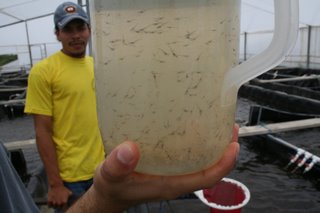
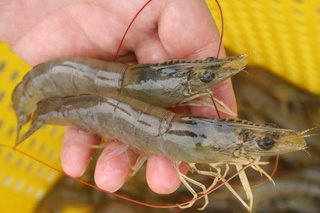
Shrimp are grown from larvae (about 20 days old - left) up to market size specimens (right) within about 120 days. The average size for a harvest shrimp is around 15 grams. This 'simple' process is the basis for a $10bn dollar global industry.
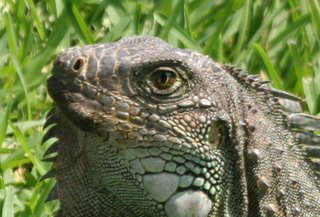
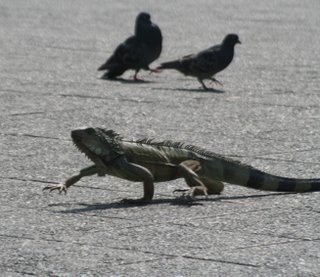
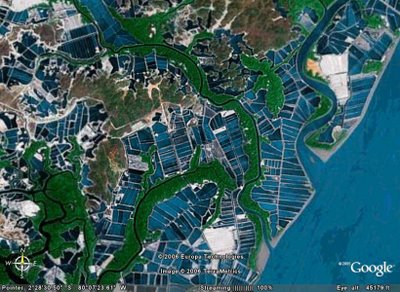
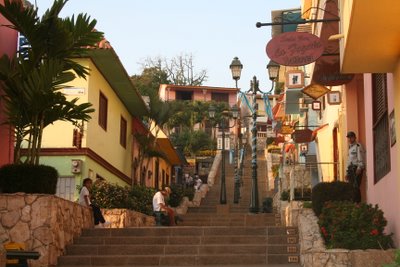

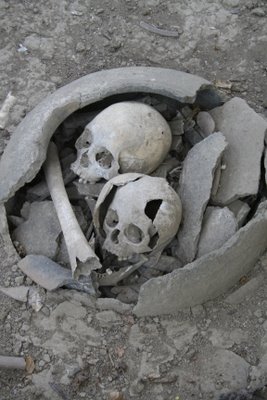
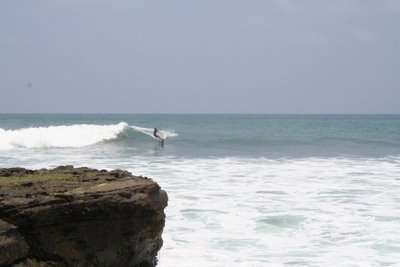
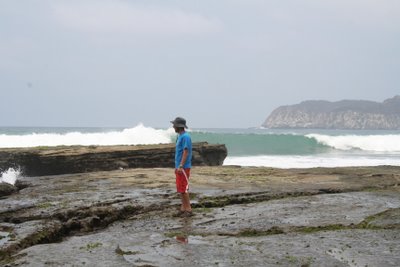
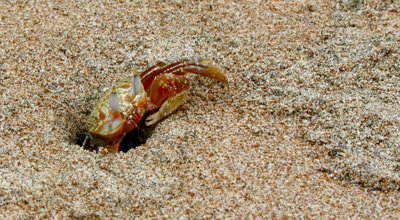
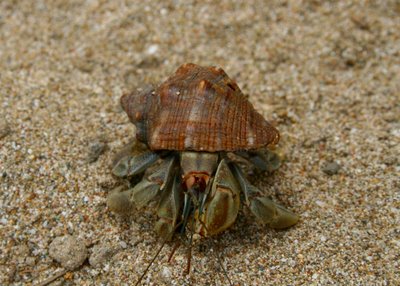
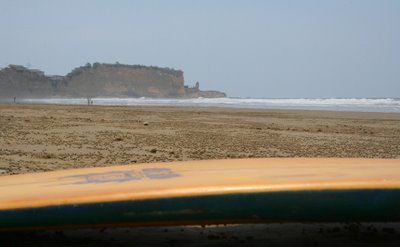

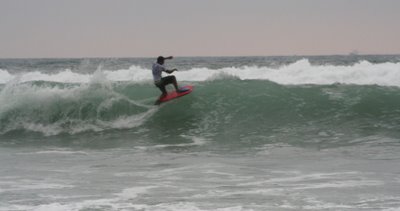
 After the demonstration, we headed around to the slighty tamer 'improvers' spot in front of the village of Olon. A quick drink from a coconut and into the water. Suprisingly it feels slightly chilly when you go in (probably due to the high air tempuratures...around 32 on the coast) but after a few seconds you realise that it is just right for board shorts. After a little guidance I was soon catching a few waves and managing to get some pretty good rides to the beach though must admit, did not pull off any of the moves seen earlier in the morning at the point (but did survive the sharks!). Ok, a tiring day was finished by watching the pro's at in again at the point. By now the tide had come pretty much up to the shacks that line the beach and it was fun just watching the experts. Most of them are pretty young, spending most of the day in or around the ocean. Gustavo told me that several of them are world standard but with little money to travel and the remote nature of town, they lack the opportunity to compete in the big events.
After the demonstration, we headed around to the slighty tamer 'improvers' spot in front of the village of Olon. A quick drink from a coconut and into the water. Suprisingly it feels slightly chilly when you go in (probably due to the high air tempuratures...around 32 on the coast) but after a few seconds you realise that it is just right for board shorts. After a little guidance I was soon catching a few waves and managing to get some pretty good rides to the beach though must admit, did not pull off any of the moves seen earlier in the morning at the point (but did survive the sharks!). Ok, a tiring day was finished by watching the pro's at in again at the point. By now the tide had come pretty much up to the shacks that line the beach and it was fun just watching the experts. Most of them are pretty young, spending most of the day in or around the ocean. Gustavo told me that several of them are world standard but with little money to travel and the remote nature of town, they lack the opportunity to compete in the big events.
